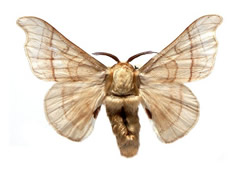HiPACC Data Science Press Room. From: UCSD
The Data Science Press Room highlights computational and data science news in all fields *outside of astronomy* in the UC campuses and DOE laboratories comprising the UC-HiPACC consortium. The wording of the short summaries on this page is based on wording in the individual releases or on the summaries on the press release page of the original source. Images are also from the original sources except as stated. Press releases below appear in reverse chronological order (most recent first).
October 20, 2014 — Physicists solve longstanding puzzle of how moths find distant mates

Moths from the species Bombyx mori (the domesticated silk moth whose larvae caterpillars are the China silkworm) were used for the study
UCSD 10/20/2014—How male moths locate females flying hundreds of meters away has long mystified scientists. Researchers know the moths use pheromones. Yet when those chemical odors are widely dispersed in a windy, turbulent atmosphere, the insects still manage to fly in the right direction over hundreds of meters with only random puffs of their mates’ pheromones spaced tens of seconds apart to guide them. Three physicists have now come up with a mathematical explanation for the moths’ remarkable ability, published in the October issue of Physical Review X. They developed a statistical approach to trace the evolution of trajectories of fluid parcels in a turbulent airflow, which then allowed them to come up with a generalized solution to determine the signal that the moths sense while searching for food, mates, and other things necessary for survival. UCSD physics professor Massimo Vergassola, initially trained in statistical physics and now working at the intersection of biology and physics in a mathematical discipline called “quantitative biology,” said the results could be applied widely in agriculture or robotics.
July 6, 2014 — Discovery provides insights on how plants respond to elevated CO2 levels

The discovery could provide agricultural scientists with new tools to engineer crops that can deal with droughts and high temperatures. Credit: Peter Trimming
UCSD 7/6/2014—Biologists at UC San Diego have solved a long-standing mystery concerning the way plants reduce the numbers of their breathing pores in response to rising carbon dioxide (CO2) levels in the atmosphere. Their discovery should help biologists better understand how the steadily increasing levels of CO2 in our atmosphere (which last spring, for the first time in recorded history, remained above 400 parts per million) are affecting the ability of plants and economically important crops to deal with heat stress and drought induced by climate change. In a paper published in this week’s early online edition of Nature, they report the discovery of a new genetic pathway in plants, made up of four genes from three different gene families that control the density of breathing pores—or “stomata”—in plant leaves in response to elevated CO2 levels. Using a combination of systems biology and bioinformatic techniques, the scientists cleverly isolated proteins, which, when mutated, abolished the plant’s ability to respond to CO2 stress.